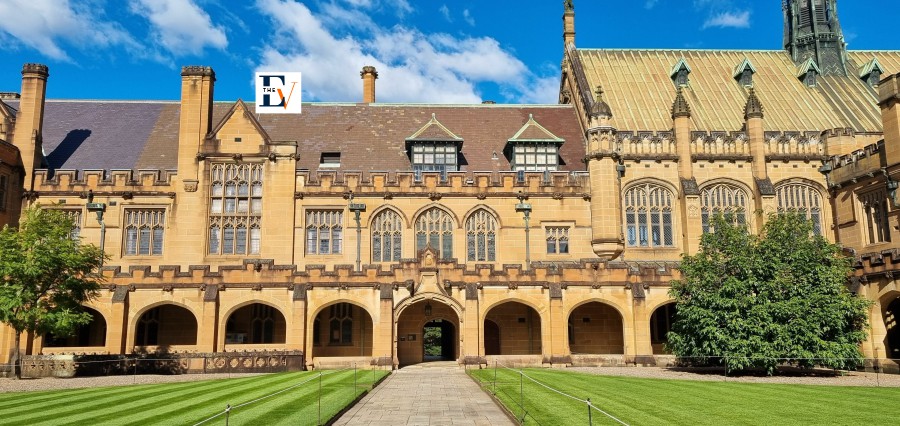Beyond Borders
Today, Australia is becoming more and more correspondent with bold comprehensive leadership efforts within the Asia-Pacific region, including diplomats and economic factors as well as security planners. This reflects the transformation in power dynamics within the regional powers that has come in the wake of China’s influence as well as shifts within the global geopolitical landscape.
This article will guide you through the details of Australia’s initiatives in changing leadership in the Asia-Pacific Region.
The Indo-pacific Strategy
Adopting the concept of Indo-Pacific by Australia marks the strategic shift to allow a more unified national strategy for incorporating economic and security demands across the Pacific and Indian Oceans.
This view indeed fortifies collective security efforts against any Chinese threats by helping Australia better manage its ties with important allies like Japan and India. However, there are critical limits to this strategy if Australia were to crowd in private sector investment.
Enhancing Regional Collaborations
The Australian foreign policies intend to increase Australia’s proximity to ASEAN nations. The government has been committed to genuine alliances that would benefit both parties with mutual financial gains. This entailed business exchange programs, like the Southeast Asia Business Exchange, which organizes business tours and fosters business opportunities in the region to increase trade. This strategy aims to strengthen economic ties with ASEAN countries, making Australia a more attractive partner for investment and trade in the region.
Southeast Asia’s 2040 Economic Strategy
Australia’s Southeast Asia Economic Strategy for 2040 was released by the Australian government. The strategy states that since Southeast Asia’s economy is expected to grow to be the fourth largest in the world by 2040, Australia’s future depends on strengthening its economic links with this region.
The strategy lists ten areas of priority for growth in each nation, with a particular emphasis on green energy, infrastructure, healthcare, and agriculture, as well as increased investment and two-way trade. Australia works to improve the region’s economy while fostering mutually beneficial connections.
Funding Facility for Investments
The facility will make loans, provide guarantees, and build equity in support of Australia’s trade and investment interests in South-East Asia focusing on infrastructure and sustainable energy. Investment Deal Teams will be established by the government to locate and promote opportunities for investment through key Southeast Asian centers, including Singapore, Jakarta and Hanoi.
They will identify investment opportunities and accelerate the deal-making process by closely working together with the governments and businesses of Australia and Southeast Asia.
National Defense Strategy
The Australian National Defense Strategy has revised itself to better tackle the increasing security threats to this region. Regional stability would require stronger military preparedness and more alliances with other allies in the years to come, much at the instigation of China’s aggressive moves.
The plan represents a perceived need to address the persistent threat of regional hegemony, a growing possibility of more competition in the region, and an anticipated need for a stronger deterrence capability all at once.
Military Cooperation Initiatives
The government of Australia is taking advantage of initiatives like the Quadrilateral Security Dialogue (QUAD), with members from the US, India, and Japan, to further develop military ties. In a broad sense, this is meant to maintain a balance in the given region while striving to maximize common security for all parties involved through intelligence sharing, coordinating military exercises, and actions providing humanitarian and disaster relief.
The QUAD also offers a platform to discuss a common security agenda, including counterterrorism, cyber threats, and maritime security.
Conclusion
This strategic engagement in the Indo-Pacific region by Australia testifies to commitment towards regional stability and economic prosperity in providing security and therefore multifaceted policies such as economic diplomacy, trade promotion, and defense cooperation towards being a reliable and valued partner in the region.
For instance, the state is highly interested in the development of good relations with ASEAN countries using such projects as Southeast Asia Business Exchange and Southeast Asia Economic Strategy to 2040.
At the same time, it reflects a deep understanding of growth potential in the economy of this region and strives to add to it. The setting up of a funding facility, along with the Investment Deal Teams, indicates that the country is serious about fostering trade and investment and nurturing mutually helpful partnerships.
It reflects Australia’s recognition of the growing geopolitical challenges in the region through a revised national defense strategy and participation in initiatives like QUAD. Strengthening military capabilities, along with deep cooperation with allies, is a necessary step by Australia to maintain the conduct of balanced power dynamics and address mutual concerns for security.
The three mentioned approaches of Australia are with respect to leading strategies of the country in the Asia-Pacific region: building rich relations, promoting economic cooperation, and tackling security challenges. Australia invests in priority sectors like infrastructure, clean energy, and many more, thus contributing to development in the region and fostering a better, more stable environment. Australia through its funding, enhanced military cooperation, and Investment Deal Teams plays a significant role in setting up the stage for the Asia-Pacific region






